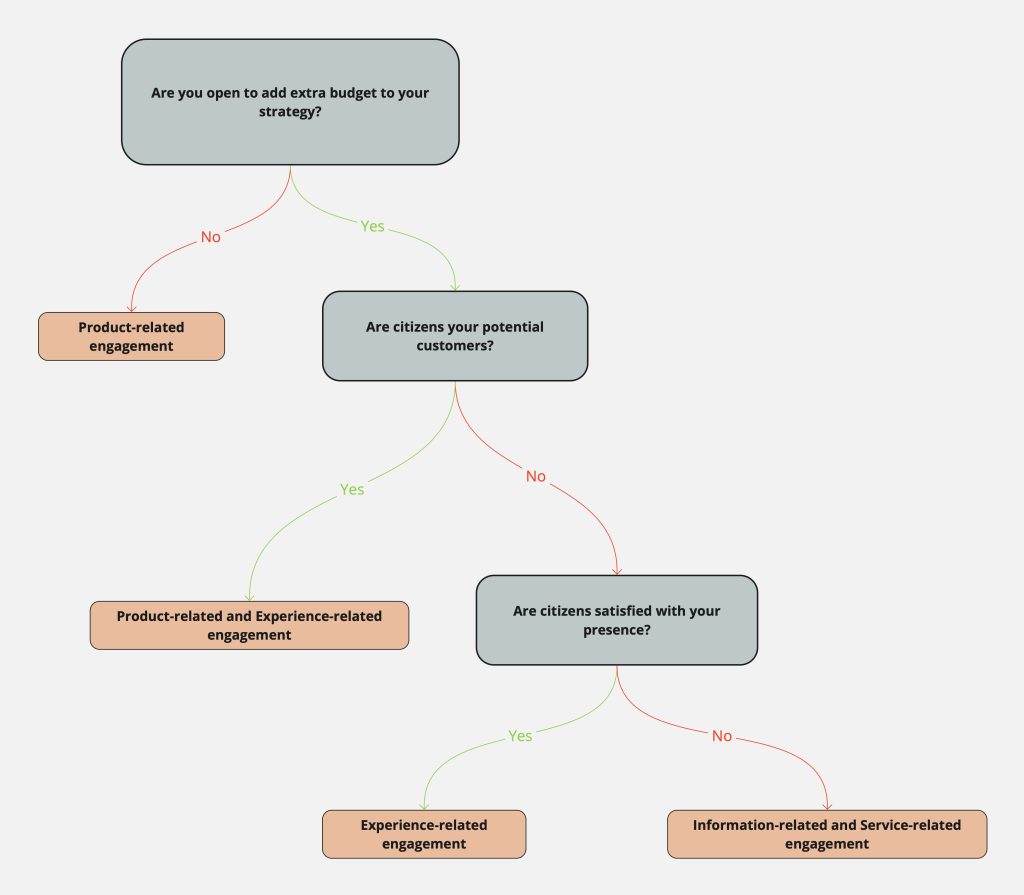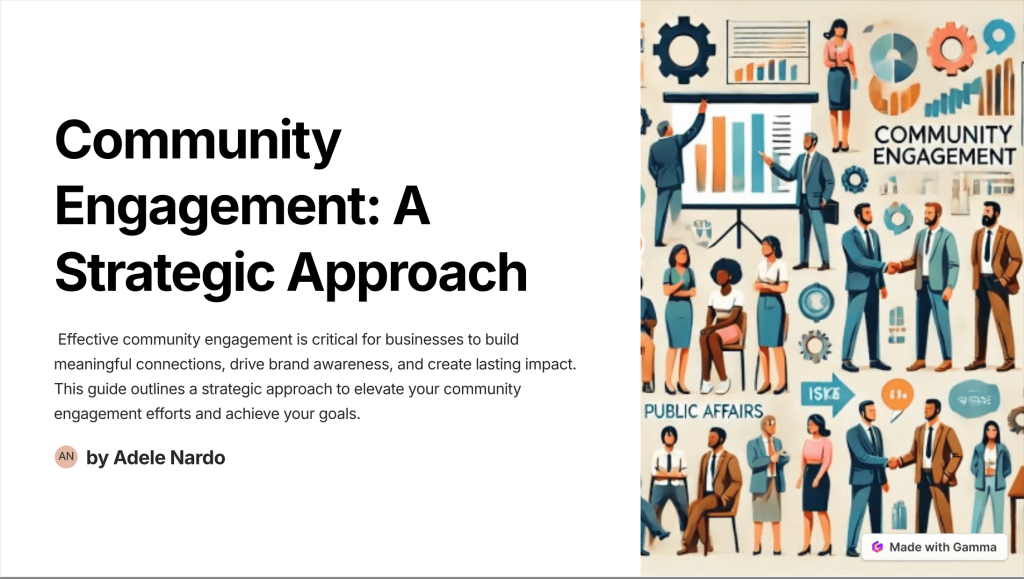Community Engagement & Public Affairs: Tips and Tricks on how to maximise your outreach strategy
Most businesses only focus on high level stakeholders when drafting their Public Affairs strategy. However, community involvement enables your company to build strong, positive relationships with the communities you operate in.
There are different types and degrees according to which you can engage with local citizens. All of them aims at gathering further political support. A strong local acceptance represent your negotiation power with local and national policymakers and ultimately, make your life easier.
In this artlicle we will show you:
- Which types of community engagement activities you can set up
- How to choose the right one for your busines
- Tips and tricks for developing a long-lasting relationships with communities
Why your company should develop a Community Engagement Plan
There are three main reasons that support the importance of developing a Community Engagement Plan:
- Regulatory and community support: Proactive engagement with the community is positively regarded by regulators and can lead to further political support on a local and national level
- Employee satisfaction and talent attraction: Showing a strong presence in te region helps you boosting your employer branding and increase the satisfaction of your employees who see that you benefit the community as a whole
- Boosting innovation: Setting up co-creation project can help you innovate your business, for example, LEGO ideas’ platform has produces over 20 new sets from user-submitted projects.
Three communities that you should take care of
Web communities
Social media is the key and the weapon
Social networks such as LinkedIn, Facebook, Twitter and Instagram can help you build your reputation as a company, an employer and an actor in your region. Different types of social networks attrack different audiences: while in Facebook you will probably meet the angry citizens who do not want you in their backyard, in Instagram you could potentially find your next employees.
No matter which: Web communities act as multipliers and the virality of posts and messages can hinder or boost your reputation.
Local communities
Your region is your home (or your enemy)
People living in proximity of your establishment or range of action are fundamental to support your sustainable growth. You can map your local communities by considering a 15 km radius from your company: People living in the nearby districts are those who first noted your presence and who are ostly impacted from it.
Engaging local communities is key to find employees, to enhance your political support and to show the benefits that you bring to a city, a district or even a country.
Internal communities
Your employees are your testimonials
If you think that offering a well-paid job is enough to have your employees supporting your cause, you are probably wrong. Employees are crucial aplificators of your practices and are therefore important to support or destroy your reputation.
Besides reasonable working conditions and attractive benefits, you should actively engage with your employees, by showing them that their skills are fundamental, that they can further improve in the company and that you value their work.
Four examples of community involvement programmes that your company can implement
There are various ways you can involve your company in the community, each offering unique benefits and opportunities for connection. The following sections outline key types of community involvement, including information dissemination, experiential engagement, product showcases, and direct community service.
Information-Related Engagement
Foster transparency spreadheading information about your business.

➡︎ Informational sessions, brochures, up-to-date website or social media channels
Experience-related Engagement
Offering citizens the chance to experience the business firsthand by getting insights into the company’s operations, culture, and day-to-day activities

➡︎ Open days, on-site workshops, school visits, employees’ testimonials
Product-related Engagement
Showcase your product through interactive events to the community

➡︎ Showrooms, roadshows, exhibitions, free trials, exclusive discounts for the community
Service-related Engagement
Make a tangible impact on the community

➡︎ Volunteerism, community service, participatory budgeting, sponsoring
The master decision tree to pick the best way to engage your communities

Begin by assessing whether you are open to adding extra budget to your strategy. If not, focus on product-related engagement, leveraging your sales team’s existing capabilities. In this way, you can save on operational costs and you may not even need to add additional employees for the task.
If investing additional resources for your community engagement is in your agenda, you should consider whether citizens are are potential customers. If they are, combine product-related and experience-related engagements to showcase your offerings and provide practical insights into your operations. In this way, you would improve your local market share while gaining trust.
If the citizens are not your potential customers, evaluate their satisfaction with your presence, have a look at the media mentions since the establishment of your company and figure out the safisfaction score of the community.
If citizens are happy with your settlement, focus on experience-related engagement to deepen their connection with your business. However, if they are not satisfied, prioritize information-related and service-related engagement to improve transparency, address concerns, and demonstrate your commitment to the community.
Three ways to build a long-term relationship with your communities
- Provide regular updates in different forms (newsletters, info-sessions, newspaper articles)
- Establish a two-way communication (e.g citizens’ consultation hours)
- Be present in regular public venues (municipality, citizens’ council)
The rules of thumb when engaging with your communities
Our decision tree helps you understanding which type of community engagement is the right one for your company.
At the same time, you should consider some fundamental internal principles, regardless of the type of involvement that you are aiming.
- Achive the best with lower costs: Recycle internal initiatives and adapt them to local needs. Often Sales and Employer Branding teams can give you inspiration
- Track your effort: Set up a structure to be able to quantify your impact, for instance, recollect the number of participants, carry on on-site survey or short interviews, monitor media mentions (positive and negative), and calculate your local market share/sales,
- Aim at producing long-term effects: Produce follow-ups to keep the awarness high and enhancing public experience



No responses yet